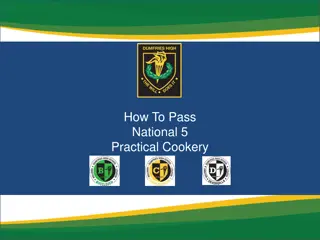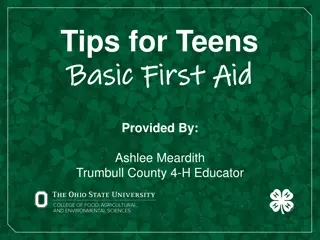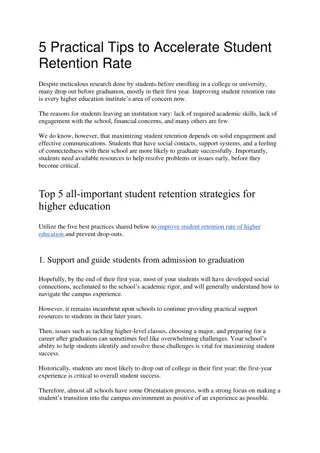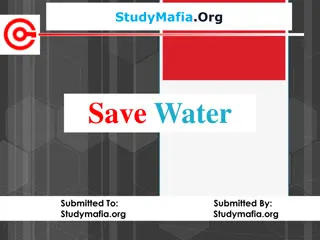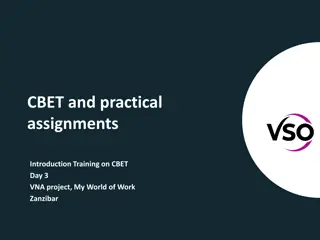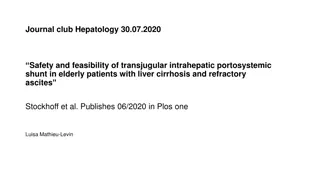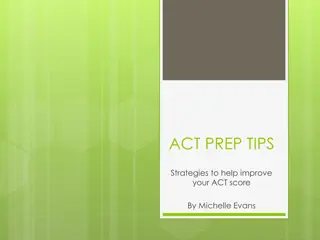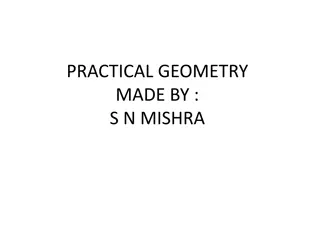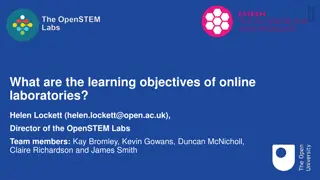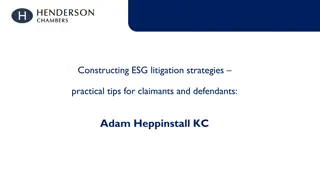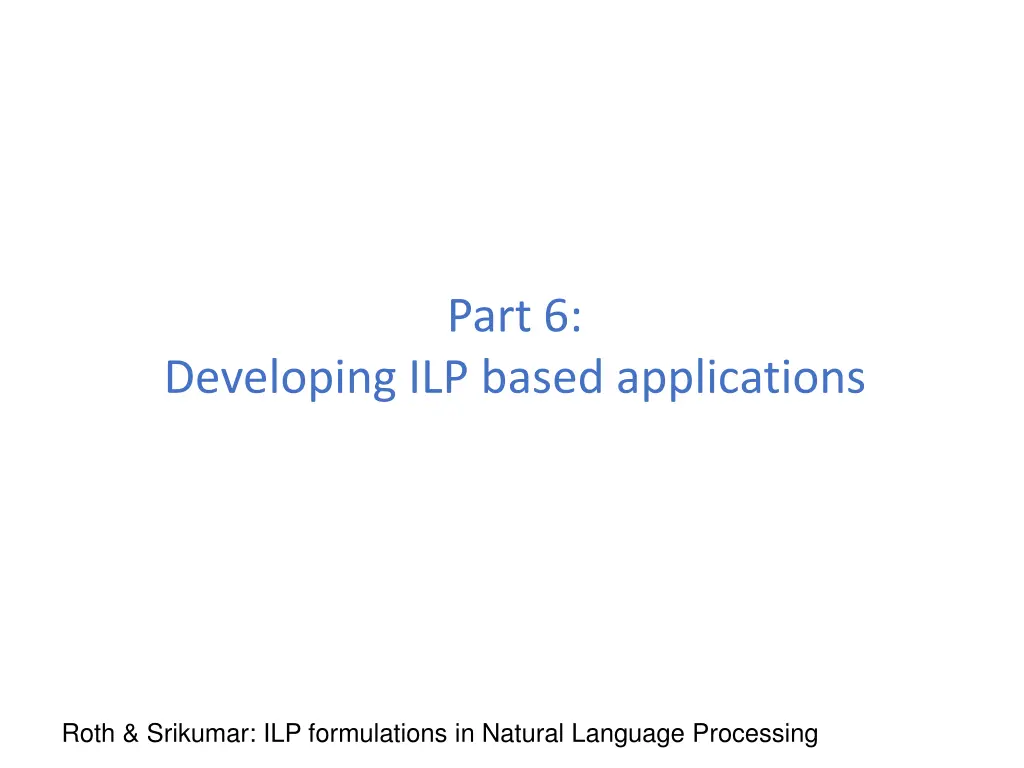
Developing ILP Formulations in Natural Language Processing
Learn how to encode Boolean statements as linear inequalities in ILP-based applications for Natural Language Processing. Explore the process of writing ILP constraints using Boolean expressions and converting them into linear inequalities. Discover the essential building blocks for formulating ILP inference, including variables, negations, and decision constraints.
Download Presentation

Please find below an Image/Link to download the presentation.
The content on the website is provided AS IS for your information and personal use only. It may not be sold, licensed, or shared on other websites without obtaining consent from the author. If you encounter any issues during the download, it is possible that the publisher has removed the file from their server.
You are allowed to download the files provided on this website for personal or commercial use, subject to the condition that they are used lawfully. All files are the property of their respective owners.
The content on the website is provided AS IS for your information and personal use only. It may not be sold, licensed, or shared on other websites without obtaining consent from the author.
E N D
Presentation Transcript
Part 6: Developing ILP based applications Roth & Srikumar: ILP formulations in Natural Language Processing
Outline How to encode Boolean statements as linear inequalities Illinois Structured Learning Library A general purpose learning library in JAVA Supports Structured Perceptron and Structured SVM 1 Roth & Srikumar: ILP formulations in Natural Language Processing
Outline How to encode Boolean statements as linear inequalities Illinois Structured Learning Library A general purpose learning library in JAVA Supports Structured Perceptron and Structured SVM 2 Roth & Srikumar: ILP formulations in Natural Language Processing
ILP constraints are Boolean expressions One-to-one mapping between the two formalisms Recipe for formulating ILP inference Identify the decision variables Write constraints in Boolean algebra Convert Boolean algebra statements to linear inequalities Allows constraints to be stated concisely as Boolean formulas 3 Roth & Srikumar: ILP formulations in Natural Language Processing
Writing constraints as linear inequalities: The setup Suppose we have decision variables: ??,??,??,etc To convert any Boolean expression, we need to show how to: Set variables to true and false Convert disjunctions to linear inequalities Convert conjunctions to linear inequalities 1. 2. 3. These basic building blocks will let us construct more complex constraints 4 Roth & Srikumar: ILP formulations in Natural Language Processing
Basic building blocks 1: Variables & Negations Forcing decisions Constraint: ?? Linear inequality: ??= 1 Used when we know certain elements of the output Eg: Find the best part of speech tag sequence where the third word is a Noun Also useful to debug inference Eg: Force all inference variables that correspond to gold labels. If the inference is not feasible, then the constraints may not reflect the data Forbidding decisions Constraint: ?? Linear inequality: ??= 0 More generally, if we see negations of a variable (e.g. ??) in a Boolean expression, use (e.g. 1 ??) in the corresponding linear (in)equality 5 Roth & Srikumar: ILP formulations in Natural Language Processing
Basic Building Blocks 2: Disjunctions One of a collection of variables should hold: ?? ?? ?? ??? 1 Disjunctions are a member of a more general building block: Cardinality constraints Exactly one of zA, zB, zC can be true zA + zB + zC = 1 At least m of zA, zB, zC should be true zA + zB + zC m At most m of zA, zB, zC should be true zA + zB + zC m 6 Roth & Srikumar: ILP formulations in Natural Language Processing
Basic Building Blocks 2: Conjunctions Each conjunction is a separate linear inequality Eg: (?? ??) (?? ??) Both the disjunctions should hold Two linear inequalities ??+ ?? 1 ??+ ?? 1 With disjunctions, conjunctions and negations, all Boolean formulas can be written as linear inequalities Convert the Boolean formula to Conjunctive Normal Form, mechanically convert 7 Roth & Srikumar: ILP formulations in Natural Language Processing
More complex building blocks Implications Convert implications to disjunctions and use the disjunction recipe Example: ?? ?? ?? Convert to disjunction: ?? ?? ?? At least one of not zi or zj 1 ?? + 1 ??+ ?? 1 Implications are very useful Example: If Mention 1 is co-referent with Mention 2 and Mention 2 is co-referent with Mention 3, then Mention 1 should be co-referent with Mention 3 Other complex building blocks exist for frequently seen inference situations that optimize for speed: Example: Ensuring graph connectivity by formulating as a flow problem [e.g. Martins et al 2009] 8 Roth & Srikumar: ILP formulations in Natural Language Processing
Outline How to encode Boolean statements as linear inequalities Illinois Structured Learning Library A general purpose learning library in JAVA Supports Structured Perceptron and Structured SVM 9 Roth & Srikumar: ILP formulations in Natural Language Processing
Illinois Structured Learning Library [Chang et al 2015] A general purpose learning library in JAVA Learning Algorithms: Structured Perceptron Structured SVM Support multi-core learning Can be downloaded at https://github.com/CogComp/illinois-sl Other libraries to consider: PyStruct, Vowpal Wabbit, SVMStruct, StructEd, Factorie Roth & Srikumar: ILP formulations in Natural Language Processing 10
Built-in applications Task Input Structure Inference Features POS Tagging sentence Tag sequence Viterbi algorithm Emission and transition features Dependency Parsing sentence Dependency tree Chu-Liu- Edmonds algorithm Tree edge features Cost-sensitive multiclass classification document Document category Simple enumeration Document features 11 Roth & Srikumar: ILP formulations in Natural Language Processing
Performance On standard NLP tasks 12 Roth & Srikumar: ILP formulations in Natural Language Processing
LBJava [Rizzolo 2012, ] A compiler that converts constraints in first order logic to linear inequalities Allows developers to think in first order logic instead of 13 Roth & Srikumar: ILP formulations in Natural Language Processing
Illinois SL details 14 Roth & Srikumar: ILP formulations in Natural Language Processing
For your own application You need to implement the following classes/functions Class/Functions Explanation Example IInstance Input Sentence Istructure Output POS tags getFeatureVector Feature generator Emission/Transition Features InferenceSolver Inference Viterbi getLoss Loss function Hamming Loss 15 Roth & Srikumar: ILP formulations in Natural Language Processing
Example: IInstance for POS tagging 16 Roth & Srikumar: ILP formulations in Natural Language Processing
Example: IStructure for POS tagging 17 Roth & Srikumar: ILP formulations in Natural Language Processing
Example: Feature Generator Add emission features to fv Add transition features to fv 18 Roth & Srikumar: ILP formulations in Natural Language Processing
Example: Feature Generator 19 Roth & Srikumar: ILP formulations in Natural Language Processing



